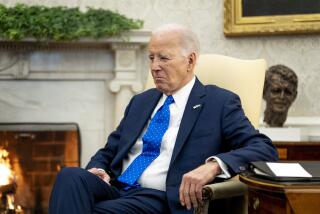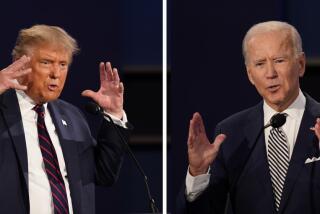Survey Finds Older People Are Unhappy With Ad Stereotypes
- Share via
ATLANTA — Older consumers--who spend about $900 billion annually--are unhappy with the way they are portrayed by America’s advertisers and are squawking about it, a researcher has found.
The survey, done by marketing professor George P. Moschis of Georgia State University, found that about one-third of respondents would boycott products or services if they perceived “inappropriate age stereotyping” in ads for them.
The survey was conducted by mail with a randomly selected sample of 1,000 people age 55 and older drawn from all 50 states. The margin of error is plus or minus 3%.
Moschis also found that 82% believe the products they buy do not work as advertised and that 75% of those who are displeased with their purchases let others know.
Part of the problem is Madison Avenue’s youth-oriented approach, said Moschis, who also is director of the Center for Mature Consumer Studies at the university. But most important, Moschis said, is that “when older people are portrayed in ads, they are not portrayed in a desirable fashion. They are shown as senile, cranky--that kind of image.
Understanding of Market
“The marketers and advertisers are not trained gerontologists,” he said. “On the other hand, gerontologists that know something about older people have not been able to translate that knowledge into marketing strategy.”
Making those kinds of translations will become more important as the baby boom generation ages.
“When the baby boomers hit that 55-plus age bracket--in about 10, 12 years or so--I think it’s going to be amplified in terms of importance,” he said.
Moschis, who is 44, said the over-55 population already controls more than three-fourths of the country’s wealth and has more than 50% of its discretionary income. In addition, he said, they control 80% of the deposits in the nation’s savings and loan institutions.
A report to be published Sunday by USC and the National Institute on Aging indicates that the financial clout of older people will increase: By 2040, a quarter of the population will be older than 65.
Categories of Consumer
Moschis put his respondents into four categories:
- Healthy Hermits. Thirty-eight percent of the respondents fit this description, he said. They are “in good health (but) psychologically withdrawn from society,” with few social contacts and little interest in staying active.
- Ailing Outgoers. Thirty-four percent fell into this category. These people are described as being “in poor health, unwilling to accept old-age status; socially active, health-conscious, interest in learning to do new things.”
- Frail Recluses. Fifteen percent were identified as being “in poor health, socially and psychologically withdrawn, inactive, concerned with day-to-day tasks, retired.”
- Healthy Indulgers. Thirteen percent of the respondents are in very good health and remain socially engaged; they are self-satisfiers who are independent, want the most out of life and are relatively wealthy.
More to Read
Sign up for Essential California
The most important California stories and recommendations in your inbox every morning.
You may occasionally receive promotional content from the Los Angeles Times.













